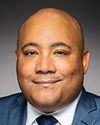moved that Bill S-210, An Act to restrict young persons’ online access to sexually explicit material, be read the second time and referred to a committee.
Madam Speaker, it is truly an honour to rise in the House and talk about such an important bill.
Bill S-210 is the protecting young persons from exposure to pornography act. This bill would restrict young persons' online access to sexually explicit material.
Tonight I am honoured to speak to this bill. We have talked about pornography in this place before, and we recognize the impact of pornography, the impact on our youth, and why it is important that we sit down and actually talk about this.
I want to talk about why we need to do this. A lot has to do with unintentional viewing of pornography by our youth. We are here today to talk about what we can put in place to ensure that when our children are turning on their laptops, when they are looking at videos that the next thing that comes on is not pornography, that it is not something that is sexually explicit.
I recall, back in the 42nd Parliament, having the opportunity to speak to Motion No. 47, which looked at pornography. That was studied at committee. I spoke to Motion No. 47 because I had had my own experience with my son. It was following a commercial that I had watched on an Air Canada flight. I shared this story back in 2016-17, but I think it is worth sharing again. It has a lot to do with something so simple turning into something so wrong.
It started off with a simple underwear commercial on an Air Canada flight. As I was flying home, I watched a commercial with two men talking to one another about how cosy they were and how life was so good. Then it zoomed back, and it is two men talking inside a pair of underwear. They represented testicles. To me, that is just what it is. They were talking about how comfortable they were. To me, it was not pornographic, and it was not sexually exploitive. It was just a really great way of selling a pair of underwear.
I thought I would show my son and my husband. At home I turned on the TV and went to one of the sites. After showing my family this video that I thought was so hilarious, it turned into soft porn. That is when I personally subjected my own child to it, without knowing. That is me as an adult user, and please do not hold that against me.
We have to look at how simple something like this could happen. It happened to me as a mom, and we know that it happens to children. Sixty-three per cent of children who have seen pornography reported that their first encounter with pornography was unintentional. Sixty-three per cent. Why is that important?
It is important because of what pornography does to a child. They looked at what the issue was. It was children having access to pornography. When surveyed, 83% of parents have suggested there should be robust age verification. That is why I am going to put on my status of women's hat now.
I have had the honour of working on really important files since 2015, working with the status of women, working as the shadow minister for women and gender equality. I understand the correlation between pornography and sexually violent acts.
A lot has to do with understanding that 41% of these children who have seen pornography have indicated that it has had a negative impact on their own relationships and their views of the opposite sex. We know that when it comes to misogyny, patriarchy and sexual violence, a lot of it is a power imbalance. That is exactly what we see in pornography.
What children are seeing is something that is not reality. Instead, they are seeing something very fictitious, very fantasy-like. With their level of maturity and processing the information in their brains, it becomes a reality. In time, they find that this sexualness, the things that they do become okay. It becomes normalized. These are things that we should really care about.
I watched an incredible documentary called Over 18. We also saw it here. It focused on a young boy, and different things about a family that was dealing with a child and other children who had come into contact with pornography. In the documentary, it was showing this young boy. The parents talked about the fact that they were sitting in the same room while he was watching pornography. Children become addicted to this kind of stuff. We know what happens with addiction, what happens to the brain. We have to know what happens when we are dealing with young children and when their brain development is being messed up.
Eighty-seven per cent of the scenes that people see in pornography are scenes of violence against women. I am not saying anything about pornography and what we should do about adults. I am talking about children and the fact is that what children would see is 87% of these acts are ones of violence against women. This is the stuff that is going into these kids' brains. Is this what our children deserve and need?
According to many researchers and studies, children and adolescents may become more vulnerable to the effects of pornographic content. In turn, with their lack of experience and development, they develop an idea of what sex is. It becomes inappropriate, violent and selfish. Women are considered tools for men's pleasure. Pornography provides violent aggression, where they believe that this becomes acceptable. Pornography becomes a role model which leads to unhealthy relationships.
When we talk about violence against women, one of the biggest things we talk about is prevention, so let us start young. Why are we not starting with our young children? We should ensure from the time they are young that they understand consent. Things like pornography should not be put into their brains until they are adults, when they can make right decisions and right choices and understand relationships and understand who to touch, when to touch, how to touch and understand that consent. Pornography does none of this. It is not something that we can say is a way of sexually educating our children. It is a way of educating our children to something that is extremely dismissive of women.
This leads into teen dating. This is where we are talking about a child who watches this information and then we have to see what happens. How do they process that information? How do they react in their relationships? There have been so many studies done on teen dating showing the correlation between pornography and violence and specifically young women who are being forced into sexual acts. It leads to unsafe sex. We know there is this obsession with sexual fantasy and aggressive behaviour. Unfortunately, young women become victims of those acts.
Pornography, once again, is not sex education. It does not provide real-life sexual experience on relationships. That is why it is so important that our children should not see this by accident.
I want to read from a passage which has the heading, “Pornography and Its Impact on Sexual Activities and Overall Behaviour”. The authors state:
Pornography use and aggressive behavior in the classroom was found to be significantly correlated, with higher consumption levels being associated with more aggressive behavior. Exposure at a younger age makes individuals receptive to watching coercive or violent porn. Watching more hardcore pornography containing abuse, rape, and child sex is associated with the normalizing of this behaviors. Exposure to sexually explicit content has a strong influence on adolescents’ sexually permissive attitudes.
Over time, the embarrassment that may follow from having a pornographic interest or engaging in pornographic behaviors may internalize itself, resulting in a decline in mental health and general life satisfaction. Pornography can excite the brain’s reward system, which can lead to severe brain alterations akin to those found in drug addictions. Compulsive sexual behaviors are also linked to early pornography exposure. By showing an absence of emotional connection between consensual couples, unprotected sexual contact, and, occasionally, violence and rape, pornography normalizes sexual harm. Male adolescents may learn that it is okay and even desired to act violently and aggressively toward and degrade their female partners from the aggressive and violent depictions of women that are prevalent in much of today’s popular pornography.
I read this because it is something that we all have to be aware of. We hear of sexual violence all the time. There are statistics and I wish I could provide an exact statistic, but it is in the range of a 70% to 80% increase in sexual violence. We need to do something about this. Prevention is one piece and this is what this bill would do. It works on prevention. It is just one of the multiple tools that we can use.
An article from the National Centre on Sexual Exploitation states, “Aggressive acts against women in pornography occur in roughly 87% of the scenes”. This is something I brought up earlier. It goes on to say, “Pornography acts as a form of sexual education, teaching the lesson that female sexual partners ought to enjoy physical acts such as hitting, gagging, slapping, or non-consensual sex.”
I do not think there is a single member of Parliament who would agree that is what we want for Canadian children. That is why I am here today to say it to everybody, and to ask for their support of this really important bill.
Now I will actually get into the bill. I have talked about why we need this bill, but what is the bill? I will let the member for Avalon know that I am about to fill him in.
This bill ensures we have age verification. We already know that some countries are using this. Germany, France and the U.K. are three that I can cite. There are also a number of states that are putting in these types of age verifications. In Germany, there are three different ways to do this with, I think, 100 different providers.
There are all these incredible things we can do. Technology will lead our way. We know that, with age verification, we need to ensure that privacy is protected. When using a third party provider to verify, for privacy reasons, we need to ensure that information is not passed on. There are a multitude of ISP providers or third party providers that can provide this type of verification. It is all about the safety of our children. It is about the safety of their brains and their development and, in turn, having healthy relationships.
In Germany, as I said, there is some great work being done. In France, they have also passed different pieces of legislation. Some of the principles put in place there are in order to reconcile the protection of privacy and youth protection through the implementation of online age verification systems for pornographic sites. They take into account certain details. I want to put this in here too because, for many people, privacy is probably what they are most concerned about. I think everybody understands saying no to pornography and children; however, privacy is sometimes what we have to look at.
We must focus on some principles when we are talking about how we ensure that age verification can be done. There should be no direct collection of identity documentation by the site publisher from the pornographic site, no age estimates based on the user's web browser history and no processing of biometric data for the purpose of uniquely identifying or authenticating a natural person. There are all sorts of different things that can be done.
I think if we look at technology today, we can even look at the fact that, when COVID came, in March 2020, we were all online and using Zoom within weeks. This is all about technology. There are people out there who can do this work. I am asking everybody to get onside so that people will be able to do it.
I have more in here, but I think what I want to do is end it off with a very simple piece on how this started in the United States. This is really important. I do not know if everyone knows who Billie Eilish is in here, but I am sure anyone under the age of 30 has probably listened to a Billie Eilish song. All I know is that she is a Grammy award-winning person who has some blue hair once in a while, but she has spoken the truth. What I really appreciate is that she has talked about her own experience. This reads, “It was December 2021 and Schlegel was on her ‘daily news scroll’ through Apple news when she saw an article describing popstar Billie Eilish's appearance on the infamous shock jock's show.” That was the Howard Stern Show that she had appeared on. Eilish told Stern, “I used to watch a lot of porn, to be honest. I started watching porn when I was like 11.... I think it really destroyed my brain and I feel incredibly devastated that I was exposed to porn so early.”
This is important, because we are just talking about a normal individual, somebody who so many young people can relate to. So many people look at somebody like Billie Eilish and wonder about what that young woman has done with her life. What an incredible artist. These are her words. When we look at mentorship, I think that we should, as parliamentarians, think of the words of Billie Eilish and support this legislation, so we can ensure our children are safe.








